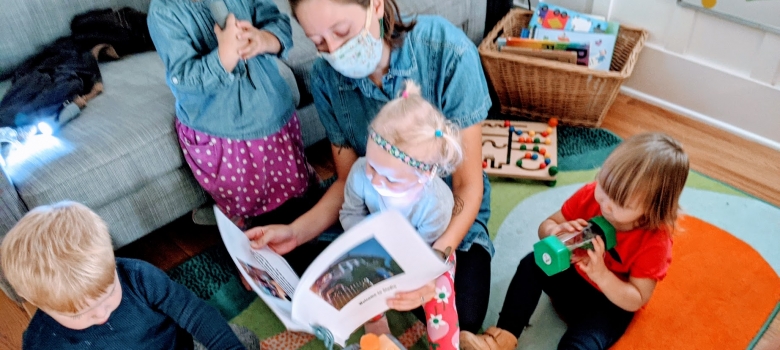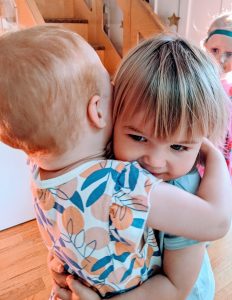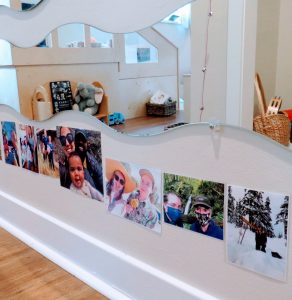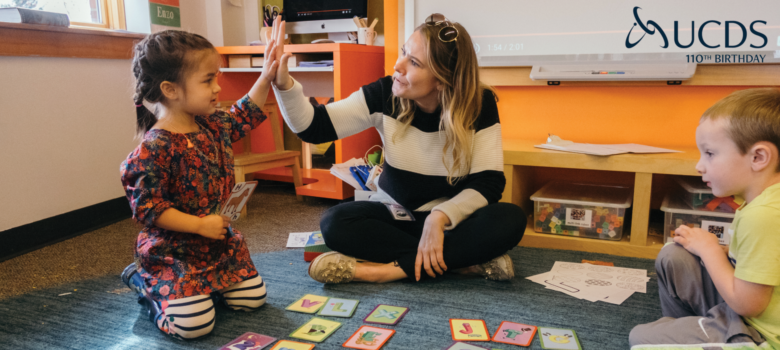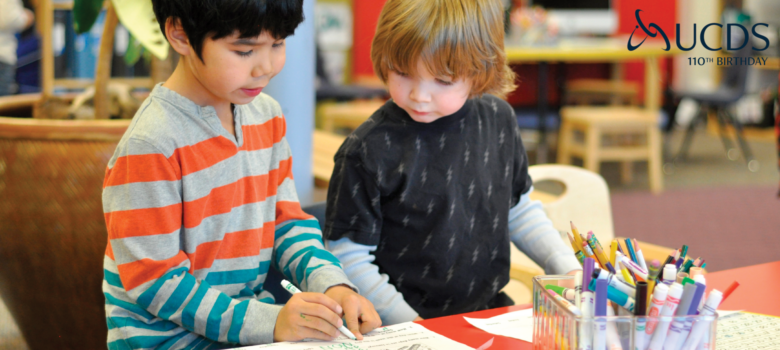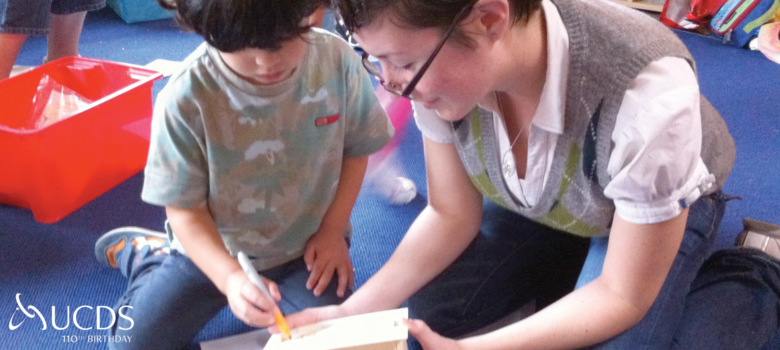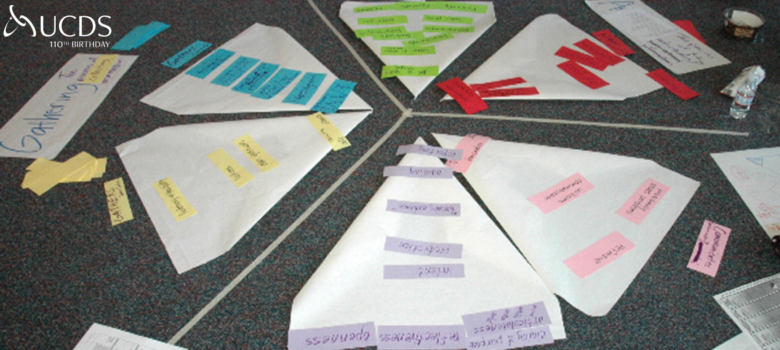by Marianne Sardelich, Infant-Toddler Education Teacher
Every morning at 8:15, I grab my basket of thermometers, walk to the garage, push a blue rolling cart with wipes and hand sanitizer to the front gate of the UCDS Infant Toddler Program and wait for our students to start arriving. By 8:16, two and three-year-olds are bounding down the sidewalk towards me ready for their temperature check, eager to get upstairs, to find out what is happening in their classroom. They wave goodbye to family or caregivers from the steps and then they are on their way. It is a joyous way to start my day but I would never have predicted at the start of the school year that “joyous” was how I would be describing our curbside drop-offs.
One of the biggest programmatic changes to the UCDS Infant Toddler Education program in response to the Covid-19 pandemic was to designate our classroom spaces for teachers and students only. This decision meant that parents, family members, and caregivers would not be in our classroom spaces for the foreseeable future. As we planned for reopening, our teaching and leadership teams began to think about all of the ways that this would change our students’ school experience. Our biggest question was how to bridge the transition between home and school if families were not in our classroom spaces, especially during morning drop-off. For young toddlers, preschoolers, and their family members and caregivers, getting dropped off at school can be an emotional experience. The shift from home life to school life is a big one and this is especially true when you are venturing away from your family for the first time. When parents read one last book in our cozy chair or chatted with a teacher about a piece of artwork their child created before saying goodbye, it helped to establish for their child that our school was an extension of their home.
Before school began, we planned for all of the ways that we were going to bring school into our students’ homes and how we were going to bring their homes into our school. We created “Welcome to Studio” books that told the story of a day at our school. We did Zoom home visits, individualized classroom visits, and sent home packages with materials that children would also find in the classroom on their first day of school. Probably most importantly, though, we held tightly to our program’s belief that children are capable and component and that they adapt to meet the challenges that face them. Still, we thought that drop-offs would be a little bit harder and a little bit sadder than usual and we braced ourselves to support children and the adults in their lives through the transition. Very quickly, we realized our predictions couldn’t have been more wrong.
When both returning students back at school after eight months of remote learning and new students joining our classroom for the first time, willingly walked into school on the first day, we thought it had to be some form of first day magic. But each day it continued and it only got easier! New students joined the program as the year progressed and they also adapted so quickly and so smoothly to saying goodbye at the gate. We have many theories for why curbside drop-offs have proved so successful. Most of our students were sheltering in place with their families leading up to the start of school so they were probably excited about the new opportunities that school offers like being with other children, materials, and experiences. The curbside drop-off is also an established routine that changes very little day-to-day with a very clear goodbye moment, and we know that children respond positively when routines can be relied upon. We also believe that all of the small things that we put in place to create a bridge between home and school worked and supported families to prepare their children for coming to school. Our students’ acceptance and readiness to adapt also feels like just another example of how children have risen to the challenges that COVID-19 has created. Our belief that children are capable and competent is reflected not just in our school but in all of the children who wear masks during the school day and remember to elbow bump their friends instead of giving them a hug. We will be so grateful when we can once again welcome families into our classrooms but it is nice to see that our program still feels like an extension of home.

